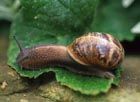What to do in the garden this week
Philip Marsden recommends turning attention to pruning clematis and battling against the slugs and snails

Clematis
Now is a good time to prune spring-flowering clematis, such as the macropetala and montanas. If they re left for a long time without pruning, they can get a bit untidy or straggle from their place. As soon as they ve finished flowering, a hard prune will allow the new growth to develop this you can train to a support, ready for next year s blossoms. If space is limited, try pruning every year; if it s not, leave it for a few years for the plant to grow into its natural form. A mulch of leaf mould or compost over the roots will keep them cool and moist.
Seed-raised perennials
Now that most of the annual and vegetable seed-sowing is over, you could continue to use your propagator to raise your own perennials from seed, to flower next year. Although plants such as delphinium, lupin, echinacea or scabious all need a little bit more work than annuals, they re more economical to grow yourself than to buy. Sow in the same way as annuals and prick out into cell trays. Pot on into 8cm pots until they re big enough to plant out later in the year.
Strawberries
Weed your strawberry beds now, before mulching them to protect the flowers and fruit from damaging contact with wet soil. We still prefer to use the traditional barley straw for protection; lift the foliage and flowers and spread a thick layer of straw underneath this will hold the strawberries off the ground. If you can t get barley straw or only have a few plants, use strawberry mats around the plants. These you can get from plant centres.
Kale
Sign up for the Country Life Newsletter
Exquisite houses, the beauty of Nature, and how to get the most from your life, straight to your inbox.
Although it s not the most popular of vegetables, kale has a place in the kitchen garden. It s rich in iron and vitamins, and is less susceptible to clubroot and cabbage root fly than its cousins. The picking time is from November to April, when there s little else available. Varieties include curly or smooth leaves and cut and cut again, but all are sown now like the other brassicas. Taller varieties should be planted deep, to anchor them against wind damage. The purple-leaved Redbor wouldn t look amiss in the flower garden.
Slug and snail control
We ve tried every conceivable barrier against snails, but with absolute failure. We ve now been asked to try the Advanced Slug Killer (by Growing Success), which is suitable for organic gar-dens and farms (EEC Directive 2092/91). The active ingredient is ferric phosphate (MAPP 11888), which suppresses the digestive system of slugs and snails to stop them eating; it s mixed with a cereal-based bait to make it palatable. As our kitchen-garden plots are ringed by dwarf box hedges that the snails treat as hotels, it sounds like a dream come true. It s organic, too, so it s certainly worth a try. Early trials on our seed-
ling delphiniums are more than satisfactory. If it s used as directed, it s reported to be harmless to all other animals and birds.
Philip Maddison is head gardener at Harrington Hall, Lincolnshire (www.harringtonhallgardens.co.uk)
-
 Brockfield Hall, the great Yorkshire house that's gone from Regency mansion to modern family home
Brockfield Hall, the great Yorkshire house that's gone from Regency mansion to modern family homeBrockfield Hall in North Yorkshire is the family home of Charlie Wood and Hatta Byng, editor of House & Garden, who have transformed it since they came here in 2020, winning multiple awards in the process. John Martin Robinson reports on the restoration project that revived this compact Regency house as a modern family home. Photographs by Paul Highnam for Country Life.
By John Martin Robinson Published
-
 Barbour’s heritage jackets get a floral makeover courtesy of Erdem
Barbour’s heritage jackets get a floral makeover courtesy of ErdemUtilitarian outwear has taken the fashion world by storm and now Britain's world-famous wax jackets are getting in on the act, inspired by some of our greatest countryside icons.
By Amy de la Haye Published